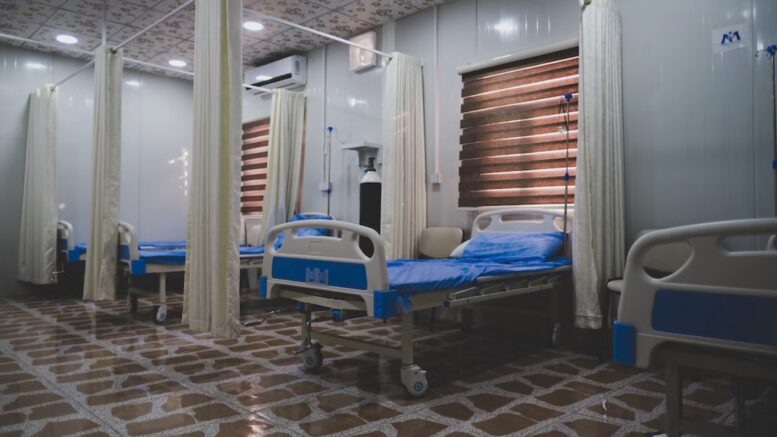Efficiency is a critical aspect of healthcare delivery, particularly within the complex and demanding environment of a hospital. To provide optimal patient care and streamline operations, hospitals must continuously seek ways to improve their efficiency. From optimizing processes to leveraging technology, several strategies can significantly enhance a hospital’s efficiency.
In this article, we will explore key ways to make a hospital more efficient, focusing on process improvement, leveraging technology, and fostering a culture of collaboration.
Process Improvement: Streamlining Operations for Enhanced Efficiency
Effective process improvement initiatives can have a profound impact on hospital efficiency. By identifying bottlenecks and streamlining workflows, hospitals can reduce waste, improve patient flow, and enhance overall productivity. Key areas for process improvement include patient admission and discharge processes, medication management, and operational workflows.
One effective strategy is to implement lean principles, which aim to eliminate waste and optimize resource utilization. This can be achieved through value stream mapping, where the entire patient journey is mapped out, identifying non-value-added steps and areas for improvement. By removing unnecessary steps and standardizing processes, hospitals can reduce waiting times, enhance resource allocation, and ultimately improve patient outcomes.
Leveraging Technology: Harnessing Innovation for Efficiency Gains
The rapid advancement of technology presents hospitals with a wealth of opportunities to drive efficiency gains. Leveraging electronic health records (EHRs), telemedicine, and digital communication platforms can streamline communication, reduce administrative burdens, and enhance patient care.
EHRs, in particular, play a pivotal role in improving efficiency. They enable secure access to patient information, facilitate real-time collaboration among healthcare providers, and automate administrative tasks such as documentation and billing. Furthermore, EHRs can integrate with other systems, such as pharmacy and laboratory systems, reducing the risk of errors and delays.
Telemedicine offers another powerful tool for improving hospital efficiency. By collaborating with a telemedicine software development company, hospitals can create tailored solutions for remote consultations and monitoring. This not only reduces the strain on physical resources but also minimizes patient wait times, enhances access to specialized care, and facilitates better coordination between healthcare providers, leading to faster and more accurate diagnoses.
Fostering a Culture of Collaboration: Enhancing Teamwork and Communication
Efficiency in a hospital relies heavily on effective teamwork and communication among healthcare professionals. As seen at Zynx Health, a culture that promotes collaboration and open communication is essential for ensuring smooth operations and reducing errors. Regular interdisciplinary meetings and case conferences can improve coordination and decision-making, allowing healthcare professionals to exchange information, discuss treatment plans, and address any challenges collectively. This collaborative approach can lead to faster and more accurate diagnoses, improved treatment outcomes, and reduced patient wait times.
Moreover, investing in ongoing education and professional development programs can enhance the skills and knowledge of healthcare staff, enabling them to adapt to changing healthcare trends and utilize new technologies effectively. When healthcare professionals are empowered and engaged, they are more likely to contribute innovative ideas, leading to continuous process improvement and increased efficiency.
Data-Driven Decision Making: Harnessing Analytics for Efficiency Optimization
Data-driven decision-making is an invaluable approach that can greatly enhance hospital efficiency. By harnessing the power of analytics and data, hospitals can gain valuable insights into their operations and make informed decisions to drive improvements. Key areas for leveraging data include resource allocation, patient flow management, and quality improvement initiatives.
Utilizing data analytics tools, hospitals can analyze patient data, operational metrics, and financial information to identify trends, patterns, and areas of improvement. For instance, predictive analytics can help hospitals anticipate patient admissions and optimize resource allocation accordingly, reducing wait times and enhancing overall efficiency.
Furthermore, quality improvement initiatives can benefit greatly from data analysis. By tracking and monitoring key performance indicators (KPIs), hospitals can identify areas of underperformance, implement targeted interventions, and measure the impact of these interventions over time. This data-driven approach empowers hospitals to continuously refine their processes and provide higher-quality care while maximizing efficiency.
Streamlined Supply Chain Management: Ensuring Efficient Resource Utilization
Effective management of medical supplies, like syringes for Medrad Injectors used for MRI imaging, pharmaceuticals, and equipment can significantly reduce waste, minimize stockouts, and streamline procurement processes. Implementing inventory management systems and adopting lean principles within the supply chain can lead to substantial efficiency gains. By accurately tracking inventory levels, hospitals can ensure that supplies are readily available when needed, reducing the risk of delays in patient care. Additionally, establishing strategic partnerships with suppliers and negotiating favorable contracts can result in cost savings and improved resource allocation.
Moreover, supply chain automation and digitization can streamline procurement processes and enhance transparency. Electronic ordering systems, automated inventory tracking, a source-to-pay tool and vendor management software can eliminate manual errors, reduce administrative burdens, and optimize supply chain workflows.

Continuous Quality Improvement: A Pathway to Sustainable Efficiency
Efficiency improvement in hospitals should be viewed as an ongoing, iterative process. Implementing a culture of continuous quality improvement (CQI) allows hospitals to systematically identify inefficiencies, implement changes, and monitor outcomes to drive sustainable improvements.
By engaging frontline staff in quality improvement initiatives, hospitals can tap into their knowledge and expertise, empowering them to contribute innovative ideas and solutions. Regular performance monitoring, patient feedback, and staff engagement surveys provide valuable data for identifying areas of improvement and measuring progress over time.
Furthermore, implementing quality improvement frameworks such as the Plan-Do-Study-Act (PDSA) cycle enables hospitals to test and refine changes before full-scale implementation. This iterative approach allows for incremental improvements and mitigates the risks associated with sudden process changes.
Conclusion
Making a hospital more efficient requires a multifaceted approach that encompasses process improvement, technology utilization, collaboration, data-driven decision-making, streamlined supply chain management, and a commitment to continuous quality improvement. By implementing these strategies, hospitals can optimize their operations, enhance patient care, and navigate the evolving healthcare landscape with agility and resilience. Embracing efficiency as a core value will position hospitals to thrive in cost-effectively delivering high-quality, patient-centered care.
